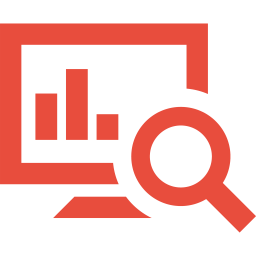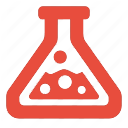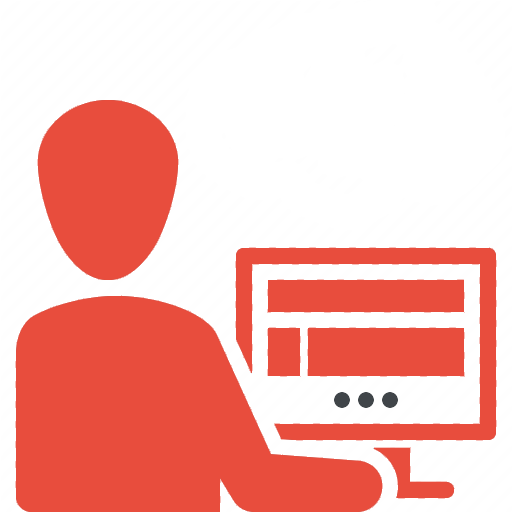User Experience (UX) Design aims to enhance how a user feels when interacting with a system. A system can be anything from a website, web app, desktop software or smart device app for emerging technologies such as smart watches.
UX Design improves user satisfaction by improving the overall usability of a system, its ease of use, its efficiency in performing tasks and the users perception of the systems use or value. Put simply, you can have the most robust system ever developed, but without proper focus on its usability the system will never meet its full potential as users will not interact with it efficiently or even willingly. By understanding human behavior and the needs of the users the system is intended for, we can pave safe ways to achieve the goals intended by developers and their organizations.
The key components of any UX Design project include the User Interface itself (UI), the Design of the system, the Interaction with the designed interface, and the architecture that drives it all.
The User Interface, or UI is the user facing portal that allows interaction with your website, app or developed system. This is the scaffolding that structures the system as a whole. Many times UX and UI are used together but they are in fact very different things. UX deals with how a user feels when using a system, where as the UI is where we encounter the usability of a system, or the user-friendliness and efficiency of the interface. Using best practices the UI aims to deliver controls that users are familiar and comfortable with, and are delivered in a way that is intuitive and available as expected. By delivering a UI which meets real-world needs, your users will enjoy working with an efficient system, as opposed to an ineffective one. That user satisfaction has proven ROI by promoting productivity and that will drive productivity. By giving users what they need, when and where they need it, the system will feel welcoming and be well adopted.
The Design represents the visual elements which define the brand and identity of a system and its organization. This isn’t just about choosing the right color palette and fonts. Proper design encompasses more than just a visual result, but applies methodologies to promote positive emotional responses to use in the system, and aims to properly represent the functions of that system and ideas developers had when creating it. The aim of user-centric design is to establish a clear understanding of the purpose of your application.
Interaction Design can easily be defined as anything your users do with your system. Literally. Simply looking at it is in fact interacting with it. A response is instantly generated and an opinion formed. Thinking about the next step is pivotal in designing the proper interaction in a website or app. When the user clicks next, what happens? What happens if that doesn’t work? We mitigate negative emotional responses by planning ahead. Interaction design considers where a user can go by studying the elements they have in front of them, and the functionality they have access to. Users expectations can vary, so paying close attention to interpretations of your design matter. If it looks like a button, and sounds like a button, it better be… a button.
Information Architecture doesn’t sound very graphical in nature, but UX Design is not just about being pretty. It’s about being useful. People need to be able to find the information they are looking for and that means that it has to be organized in a way they can find it. When dealing with large quantities of data, tables or grids it’s not enough to just give them everything you have in your database. The way data is represented to the user will define how willing the users are to navigate it. Users don’t want to feel crowded, or saturated by data that is irrelevant to them. Providing the right layout and tools to sift and sort through system data will make users find the system informational and useful, and that allows them to do their job easily and more efficiently.
The user is truly the center of everything we do. In fact, our process is called User-Centered Design. We didn’t make it up, it’s a best practice in UX Design. The premise is simple. UCD focuses on the needs, wants and limitations of end users of a product. Everyone knows happy users are the best ROI when dealing with any project - more efficiency, more productivity, less IT/helpdesk support and a stronger likelihood to support the product and be more engaged with iterative releases when their opinion counts. We play close attention at each stage of the design process and analyze how users are using or likely to use your system, and test that theory, over and over again until we are sure we’ve found the best possible solution. When we’ve found it, we document a concise explanation of our findings, and work along side you during deployment to make sure your message is coming through clear.
 UX Analysis
UX Analysis
Already have a system? We can lend a helpful eye.
If your users are complaining to IT that they can’t get their jobs done, or necessary tools are missing but are actually there, we can help. Some systems are not built with the users in mind, but rather the functionality the developers needed to deliver. This can cause a conflict between what is needed and where in the system it is placed. Business priorities usually lack real user needs and what we think matters to users isn’t always what they think matters. Worse yet, we focus on a single screen or function at a time, and don’t consider a holistic view of the project and lose sight of where functionality could have been better planned.
Our UX Experts will walk through your application with you and get an understanding of not only it’s current state, but its origins. To know where you are going, one must first understand where they came from.
We like to look at the HEART of the system. In UX Terms this means Happiness, Engagement, Adoption, Retention and Task Success. Using various metrics our team will identify any traps, dead-ends or alert you to possibly negative user interactions that may occur. We aim to find knowledge gaps and identify new strategies to better align your business goals with the users real needs.
We also look at the competition, what’s working and what isn’t? When it’s all said and done, we will work with you to plan a better UX and how to apply it without confusing your users and in most cases without requiring the need for any additional training. We know that every system is unique so it’s hard to consider a 1-test-fits-all concept, but metrics work. By testing your system and having a clear understanding of any possible pitfalls, you can breathe new life in to your existing system and show users you do understand their needs.
They’ll <3 you for it.
 UX/UI Design
UX/UI Design
Working with you towards your goal
We will be there from the start, and guide you through the UX development process with us right there at your side. We follow a User-Centered Design (UCD) approach which puts the end-users at the center of design and development. How do we do this? We start by understanding your goals and create a strategy. This is our game plan. Then we discover what you have and don’t have. We interview, we dust off old requirement docs, we dig not only in to your data, but your users workflow habits, and we dig deep. We talk directly to your users at key points to make sure we are meeting real world requirements. Then we’ll analyze our findings to make sure that what you wanted is actually what you needed. We follow an iterative process and repeat these cycles until we feel we have identified and accounted for all of the projects usability objectives.
Once we have a solid strategy, the goal is clear - we get to Design. Our designers will work side-by-side with iterative prototypes to guide you to a visually complete system that you can actually see and walk-through prior to production. Our clients love this phase, because its a time and money saver.
By experiencing your system before production even begins, you can identify missing business processes, and even overlooked functionality that was hiding in plain site your users will love. We make sure the content of your system is presented correctly, both in the right place and at the right time. Using wireframes and high-fidelity prototypes you can visualize your system holistically and ensure your message and goals are clear and concise. Once the designs are approved, production begins with or without our developers and your users will be delivered software they’ll love.
 UI Testing
UI Testing
We ask the questions that count.
When you’re committed to the development of a long-term project, the wrong decisions can cost you. You can’t directly determine the effectiveness of a UX design based on traditional metrics like page views, dead links, conversion rates and time-on-page. Whether you have a system already or are building one, even 2 or 3, our UX Experts can test, A/B test, multivariate test (we like to test) and gauge whether the interaction between your users and system is finely tuned to meet the demands of your organization. By walking in the shoes of your users, you can learn a great deal about what frustrations they may endure, and sometimes what praises they have for functionality you came up with on the fly, and desire more of. From modern heat maps and eye gazing studies to tried and true techniques like survey and sampling we can identify any problems, provide insight and guide you to a better, more refined final product to deliver to your users, waiting to be loved. We question everything, and we test everything, over and over again. We do this until we are sure we’ve minimized every click, and simplified every process to ensure user satisfaction. We work harder so your users won’t have to.
 User Testing
User Testing
User's Opinions Matter. They drive the system
Sometimes you just feel like something is wrong. Sometimes your users do too. We understand that identifying problems inside of your systems can be difficult. Users often find it difficult to verbalize what exactly it is that is “not working” for them, and few times can express that in a way that developers can grasp or find a logical solution for. We sit with your users, interview them, create sample work-flows for them to follow and moderate usability testing sessions along side them. A zero stress - ride along with a tool they are in control of. We ask questions, and gauge everything we can from the movements of their mouse to the tone of the voice when responding to questions to understand everything we can about the perception of the system being tested. We translate into technical terms what users can’t, and we provide design and architecture recommendations to alleviate any strains or stress users encounter.
Pre-launch market concerns? We can help. We have access to test users around the globe that can test your website, app or system before it launches and gather critical information to make a stop/go decision. It’s never too late to test, but it’s always better to know before you go. Get a fresh set of eyes on your project before it hits the market and make sure you haven’t missed anything yet. Our UX Experts will setup a testing group of any size you require and work along side these users in an open or blind study of your product and report the overall expectation of its effectiveness before you deploy.
 Design Strategy
Design Strategy
We know design matters.
It influences trends, and can make or break a brand. Product design is not enough by itself, the supporting content is every bit as important. You have a message to get across, and it needs to be clear. Delivering a consistent visual message can drive a stronger brand recognition and improve a companies overall market share. Users need to see, read and understand your message as quickly and concisely as possible. Your business depends on that message coming across clear. We’ll work along side you to define your vision and create a design strategy guaranteed to maximize brand awareness through consistency throughout the creative process and ingenuity in content awareness and placement.
To see a full list of UX and UI Services we offer click here.